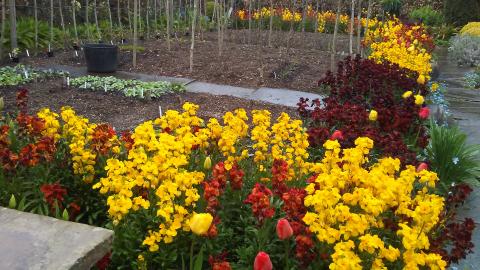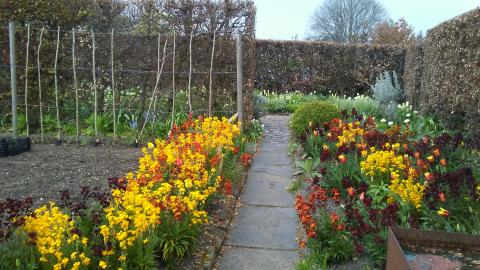York Gate Wallflowers

At York Gate garden in North Leeds, the vegetable beds have been made ready and a good crop is expected. Around them, however, are planted the most gorgeous wallflowers whose scent permeates the air. I thought it strange that they should plant blooms, no matter how lovely, around a vegetable patch. Perhaps they added some nutrient to the soil, or kept away certain pests, I wondered, but my search yielded no evidence. The wallflower is part of the brassica family of plants, which includes cabbage, mustard, sprouts and broccoli. Thompson & Morgan (‘Experts in the garden since 1855’, no less) claim that the wallflower’s tender stems may be eaten after cooking, though I note it doesn’t feature in its top ten of edible flowers. Wallflower foliage is rather tatty and ugly, but the flowers they produce are worth anyone’s trouble. They might not be quite as tasty as their cousins, yet their exquisite smell similarly stimulates receptor proteins on our sensory cells, initiating a neural response not unlike that of taste.

We Christians vary in the quantities, frequencies, and natures of the fruit we yield to the Gardener. I don’t really want wallflower soup and cabbages wouldn’t look great in a vase. Be glad for the fruit you do bear, and be not troubled that you aren’t as perfectly joyous, or peaceful, or kind, or good, or faithful or gentle as everyone else. A good gardener grows both flowers and vegetables, for both of them give him different, but equally delightful, pleasure.
- Log in to post comments


 Sunday Worship 10.45am & 6.00pm
Sunday Worship 10.45am & 6.00pm